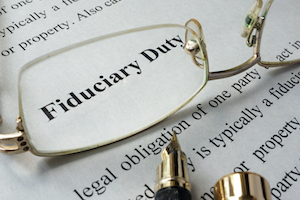The Department of Labor’s (DOL) fiduciary rule still generates discussion. That’s staying power—it was first proposed more than a decade ago. A March 31 NTSA webcast took a look at the rule and current developments involving it.
In “How the Fiduciary Rule Affects Advisors and Other Retirement Plan Parties,” American Retirement Association General Counsel Allison Wielobob and ARA Director of Legislative Affairs Andrew Remo offered their insights on the rule. Susan Diehl, President of PenServ Plan Services, served as moderator.
Regulatory Rollercoaster
The fiduciary rule, which Remo said has been described as the “most controversial and contentious rulemaking in the last decade,” was first proposed in October 2010. Almost a year later, it was withdrawn. But that really was only the beginning.
The DOL reproposed the rule in April 2015, and one year later it issued it in final form, with an applicability date of June 2017. However, upon taking office, the Trump administration in February 2017 ordered the DOL to review the rule. In June 2017, the DOL issued a field assistance bulletin that limited enforcement of the rule, but the death knell came in March 2018 as the 5th U.S. Circuit Court of Appeals vacated it.
The end? Hardly. In June 2020 the DOL reproposed the rule yet again, and issued a final rule six months later with an effective date of Feb. 16, 2021.
With the latest iteration of the final rule, the 5-part test put in place in 1975 defining who an advice fiduciary is has been reinstated. But that’s not all—it includes new commentary on rollover advice and other matters and new and interpretive positions that extend the reach of the test, particularly regarding rollovers.
“The rule has taken a lot of shapes and forms,” said Wielobob, telling attendees that the DOL is taking a compliance assistance approach for the time being.
Prohibited Transaction Exemption
On Dec. 18, 2020, the DOL released Prohibited Transaction Exemption (PTE) 2020-02, “Improving Investment Advice for Workers & Retirees.” PTE 2020-02 reinterpreted and broadened the five-part test under DOL’s 1975 regulation defining who is an advice fiduciary.
The final exemption applies to investment advice given to “Retirement Investors”:
- a participant or beneficiary of a plan subject to Title I of ERISA, or a plan described in Code Section 4975(e)(1)(A) of but not subject to Title I of ERISA, with authority to direct the investment of assets in his or her plan account or to take a distribution;
- the beneficial owner of an IRA acting on behalf of the IRA; and
- a fiduciary with respect to a plan or IRA (no matter the size of the plan). ERISA welfare plans with an investment component are covered (e.g., health savings accounts).
Conditions for the new class exemption include:
- follow impartial conduct standards;
- acknowledge fiduciary status;
- describe services and disclose material conflicts in advance;
- develop written policies and procedures to comply with these standards and mitigate conflicts;
- conduct annual retrospective compliance review; and
- document rollover advice.
The exemption is a big deal because it shows how fiduciary advice can be provided without running afoul of the prohibited transaction rules, Wielobob remarked. And the matter may not yet be settled. “The people leading EBSA right now have conveyed that the final rule exemption will likely have ‘additional steps,’” she said.
When asked by Diehl whether the rule applies to IRA to IRA transactions, Wielobob responded that she thinks it does. However, she added, “In my view, that’s not what they really care about right now.”
Key Changes
Key changes in the latest iteration, Wielobob and Remo said, include that the DOL further explained and tightened the circumstances in which it will consider rollover advice to be fiduciary “investment advice,” under a new interpretation of the 1975 five-part test. Also, under the exemption, a fiduciary must provide written disclosure of the reasons that a rollover recommendation is in the retirement investor’s best interest. And the final rule added a self-correction program that provides that there is no prohibited transaction if, among other conditions:
- there is no investment loss;
- the investor is made whole;
- the advice fiduciary corrects the violation within 90 days; and
- the advice fiduciary notifies the DOL within 30 days of the correction.
“There will be pressure to maintain the status quo,” Remo told attendees. Wielobob remarked that, “The uniformity it provides is probably easier” to have “a federal fiduciary rule as opposed to a patchwork of state rules.”
- Log in to post comments
